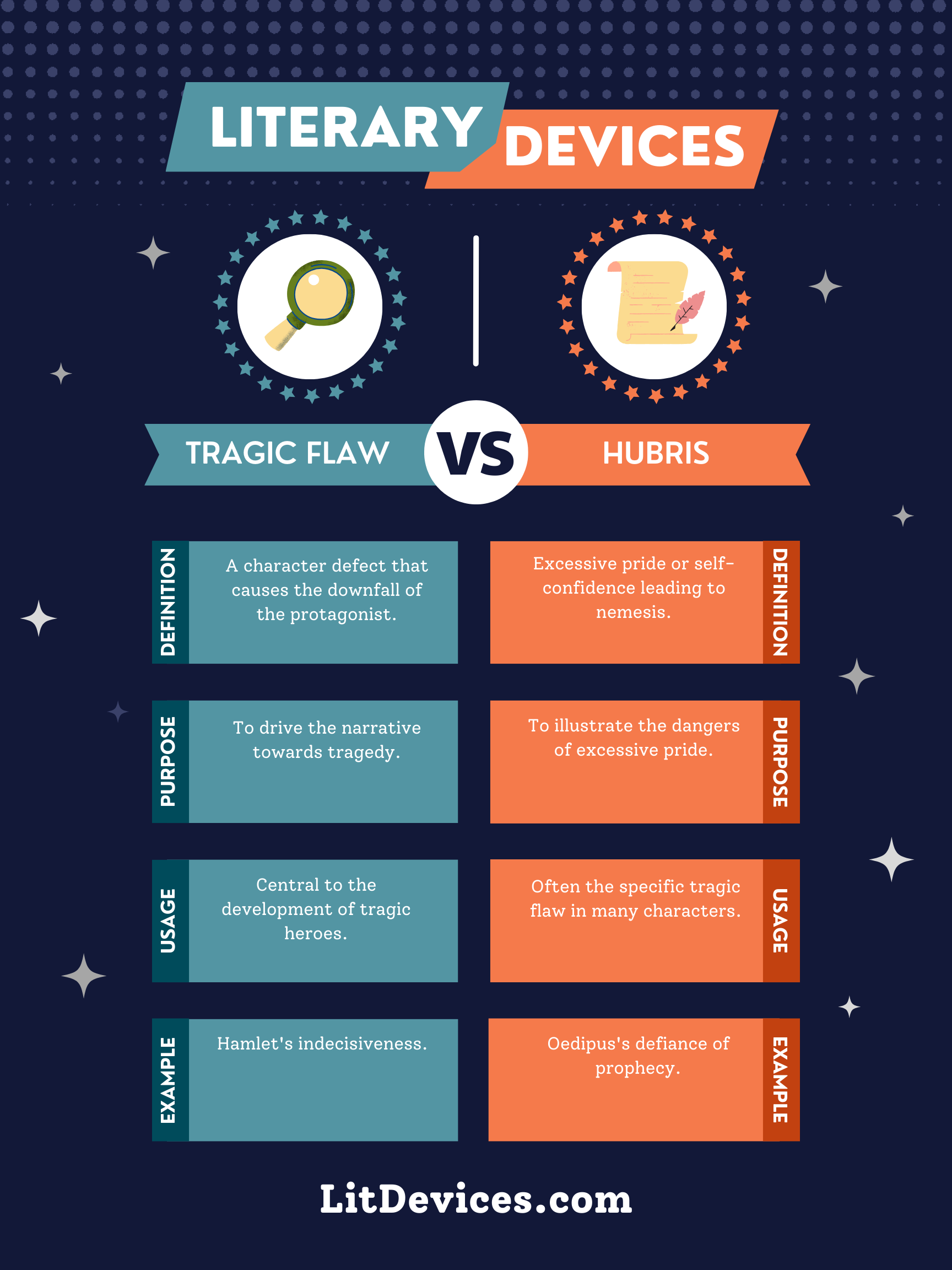Tragic Flaw is a character trait that leads to the downfall of the protagonist; Hubris, a type of tragic flaw, specifically refers to excessive pride or self-confidence.
Tragic flaws and hubris are pivotal elements that bring depth and complexity to characters, especially in tragedies. By exploring these concepts, we can gain a deeper understanding of how characters are shaped by their virtues and vices. 🎭✍️
Tragic Flaw
A tragic flaw, or hamartia, is a character trait that leads to the protagonist’s downfall. It can range from hubris (excessive pride) to impulsiveness or jealousy. This flaw makes the character relatable and their downfall tragic. Shakespeare’s Hamlet is often cited for his tragic flaw of indecision, which ultimately leads to his demise.
Hubris
Hubris, considered a specific type of tragic flaw, involves excessive pride or self-confidence that blinds a character to their limitations and leads to their downfall. In Greek mythology, the story of Icarus, who flew too close to the sun despite warnings, is a classic example of hubris.
Summary
| Literary Device | Definition | Purpose | Usage | Relevant Examples |
|---|---|---|---|---|
| Tragic Flaw | A character trait leading to the protagonist’s downfall. | To humanize characters and propel the narrative toward tragedy. | Dramas, tragedies. | Hamlet’s indecision in “Hamlet” by Shakespeare. |
| Hubris | Excessive pride or self-confidence, a type of tragic flaw. | To illustrate the dangers of excessive pride and defiance of natural limits. | Mythology, tragedies. | Icarus’s disregard for limitations in Greek mythology. |
Writing Tips
Tackling Tragic Flaw:
- Identify the Flaw: Determine what flaw will best serve your narrative and character development.
- Show Consequences: Clearly illustrate how the tragic flaw leads to the character’s downfall.
- Provide Depth: Make the character multi-dimensional. Their flaw should be a believable part of their complexity.
Incorporating Hubris:
- Build Up: Establish the character’s pride gradually, showing how it affects their decisions.
- Contrast with Reality: Highlight the gap between the character’s perception and their actual situation or ability.
- Catalyst for Downfall: Ensure that hubris directly influences the plot, leading to the character’s undoing.
FAQs
Can a character have more than one tragic flaw?
Yes, characters can possess multiple flaws, but usually one dominant tragic flaw drives their downfall.
Is hubris always a tragic flaw?
While hubris is often seen in tragic narratives, not all stories with hubristic characters are tragedies. However, in the context of tragic flaws, hubris is a primary example.
Exercise
Read the following description: “Despite being warned of the storm’s intensity, the captain’s arrogance convinced him he could navigate through it. His decision led to a disastrous shipwreck.”
Answer: This example illustrates hubris, where the captain’s excessive pride or overconfidence directly results in his downfall.
Other Interesting Literary Device Comparisons
- Irony vs Sarcasm: Irony involves a discrepancy between expectations and reality, while sarcasm is a form of verbal irony used to mock or convey contempt.
- Foreshadowing vs Flashback: Foreshadowing hints at future events, creating anticipation, whereas flashback provides backstory, adding depth to the narrative.
- Metaphor vs Simile: Both compare two different things, but metaphors do so directly, while similes use “like” or “as” for comparison.
By examining these devices, we enhance our appreciation of the artistry behind storytelling, revealing the intricate ways writers influence our emotions and understanding. 📚❤️

